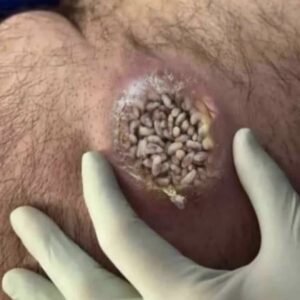Why does it feel and look like you’ve been living in a desert no matter how much moisturizer you put on your feet? It is understandable that maintaining soft and smooth feet can be difficult because the skin on the feet has less oil glands to keep them hydrated. If you have dry, cracked, hard heels, that goes double.
Dry, cracked feet and heels can be caused by a variety of factors, including cold, dry weather, standing for extended periods of time, walking a lot, wearing shoes that are too tight, and using harsh detergents. However, so may skin disorders including psoriasis, eczema, and athlete’s foot. Dry, cracked foot skin can also result from changes in the feet brought on by diabetes.
1. A pumice stone or foot scrub
Dry, dead skin is removed via exfoliation, exposing smoother, softer skin beneath. When the skin is soft, you can exfoliate with a pumice stone or an over-the-counter foot scrub, ideally after taking a warm water bath, shower, or foot soak (add a little Epsom salt for good measure). Avoid using too much force while using a pumice stone. When you’re finished, apply a moisturizing moisturizer.
If you have open wounds or sores on your feet, avoid exfoliating them.
2. A foot file or rasp
A foot file is a device that mechanically exfoliates the skin. It has a handle and an abrasive metal surface. There are foot files that resemble cheese graters. Generally speaking, these should only be used on calloused heels, if at all, as they may be extremely harsh on the foot.
Similar to pumice stones, foot files work best on relaxed skin following a bath, shower, or foot soak. Another choice, particularly for removing tough, dead skin from the heels, is an electric foot file with a rotating head. Although certain waterproof types can be used in the shower, these are usually worn on your dry feet.
3. Foot cream or heel balm
Don’t use lotion if your feet are really dry. Compared to creams and ointments, lotions are less hydrating and contain a lot of water. Think about purchasing a balm or cream made especially for heels or feet. Usually thicker, these can include exfoliating and softening agents such urea, lactic acid, salicylic acid, hyaluronic acid, or alpha hydroxy acid. Cracked heels can be avoided with regular use.
Wear cotton socks at night to seal in the moisture and maintain clean bedding, and apply a thick coating of petroleum jelly, foot lotion, or heavy moisturizing cream to your feet.
4. Moisturizing gel socks or heel socks
Moisturizing foot socks, also known as heel sleeves or foot socks, are available online and can provide the benefits of moisturizer plus cotton socks without the mess. Their lining is made with moisturizing gel. Wear them when you sleep or for a few hours each day.





